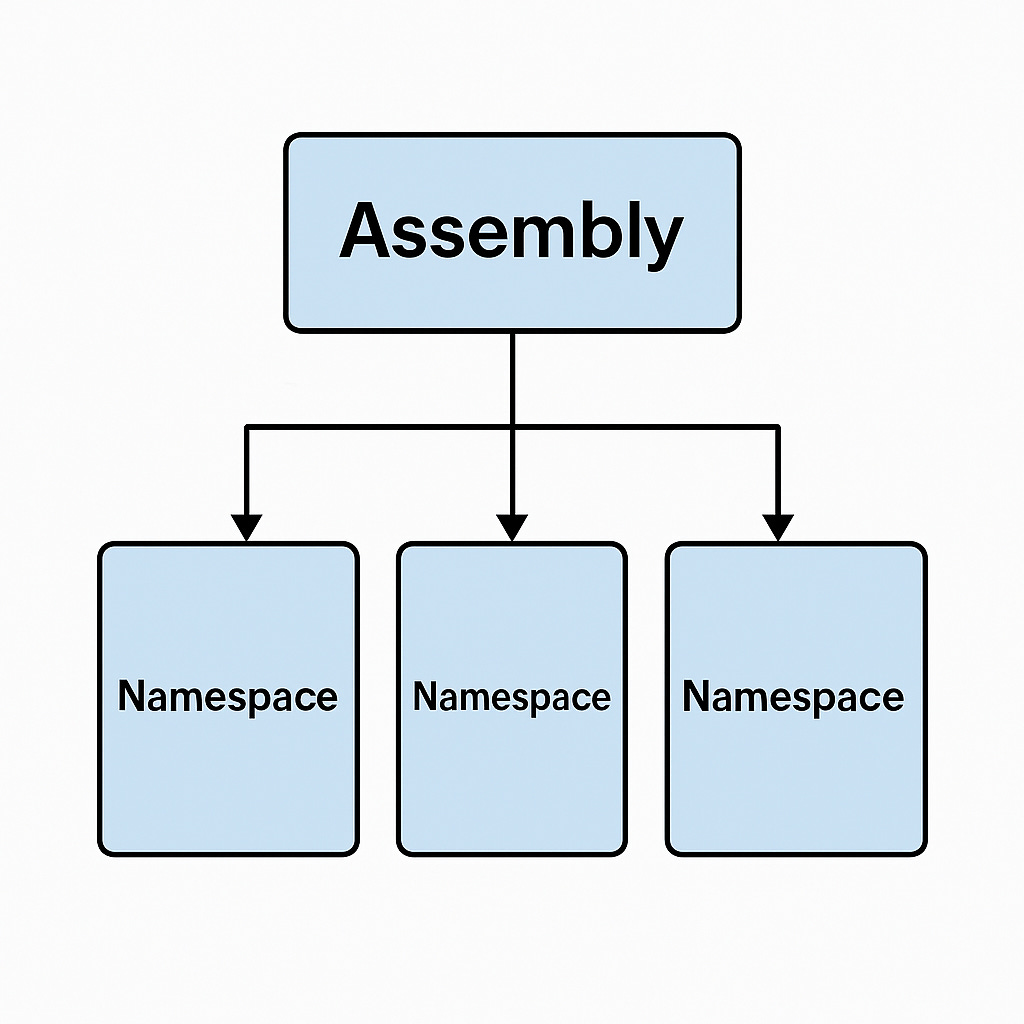C# : Assemblies and Namespaces
In the realm of C# programming, two fundamental concepts—Assemblies and Namespaces—act as the cornerstones of code organization and deployment.
In this blog post, we'll embark on a journey to demystify these concepts, providing real-world analogies and C# code snippets to illuminate their significance.
Assemblies
Understanding Assemblies
An Assembly is the compiled unit of code in C#, representing the smallest deployable entity within the .NET framework. It combines compiled Intermediate Language (IL) code, metadata, and resources, resulting in either a Dynamic Link Library (DLL) or an Executable (EXE) file.
Key Attributes of Assemblies
Compilation Unit : Assemblies are the output of compiling one or more source code files, encapsulating the compiled code and necessary metadata.
Physical Deployment Unit : Assemblies serve as the physical units deployed in .NET applications. They can be shared among multiple applications, promoting code reuse.
Security Boundary : Assemblies define a security boundary in .NET, allowing for the assignment of specific permissions to the code within an assembly. This contributes to .NET's Code Access Security (CAS).
Strong-Naming : Assemblies can be assigned a strong name—a globally unique identifier that includes the assembly's identity and version. Strong-naming enhances security and supports versioning.
Real-World Analogy: The Library System
Imagine a library where books symbolize different assemblies. Each book (assembly) contains chapters (code) and metadata (book details). Readers (applications) can borrow and use these books independently, promoting a modular and scalable system.
// Example of a simple class in an assembly
public class Book
{
public string Title { get; set; }
public string Author { get; set; }
public void Read()
{
// Reading logic
}
}Namespaces
Grasping Namespaces
A Namespace is a container for logically organizing related types (e.g., classes, structs, interfaces) within a C# program. It provides a hierarchical structure to the code, facilitating better organization and avoiding naming conflicts.
Key Attributes of Namespaces
Organizational Unit : Namespaces act as organizational units, grouping related types together. They enhance logical organization within the codebase.
Avoiding Naming Conflicts : Namespaces prevent naming conflicts by providing a scope for identifiers. Types with the same name can coexist peacefully if they belong to different namespaces.
Hierarchy : Namespaces can be nested within each other, creating a hierarchical structure that allows for a more granular organization of code.
Visibility : Types within a namespace are visible to other types within the same namespace by default. Access modifiers can control visibility, ensuring encapsulation.
Real-World Analogy: The Corporate Structure
Picture a corporation where departments represent namespaces. Each department (namespace) houses employees (types) with specific roles. The hierarchical structure enhances organization and avoids role conflicts, mirroring the logical structuring of code.
// Example of a simple class within a namespace
namespace CorporateStructure.HumanResources
{
public class Employee
{
public string Name { get; set; }
public string Department { get; set; }
public void PerformTasks()
{
// Task execution logic
}
}
}Relationship Between Assembly and Namespace
Overlap : An assembly can contain one or more namespaces, and a namespace can span multiple assemblies. Multiple assemblies can contribute to a single namespace, allowing for a modular and distributed codebase.
https://dotnetfullstackdev.medium.com/
Physical vs. Logical : Assemblies provide physical organization during deployment, versioning, and security, while namespaces offer a logical structure within the codebase. They complement each other to achieve a harmonious balance between physical deployment and logical organization.
Granularity : Namespaces provide granularity for organizing code within assemblies. They offer a way to structure code logically, making it more comprehensible and modular.
Conclusion
Assemblies and Namespaces in C# serve as fundamental pillars for architects and developers alike. Mastering their interplay is pivotal for creating maintainable, scalable, and modular software systems. Assemblies, akin to deployable books, encapsulate compiled code, ensuring security and versioning. Namespaces, resembling departments, provide a logical hierarchy for organizing and understanding code.
By weaving the tapestry of Assemblies and Namespaces, C# developers can architect robust and well-organized applications. These concepts are not mere abstractions but practical tools for building software that stands the test of time.


